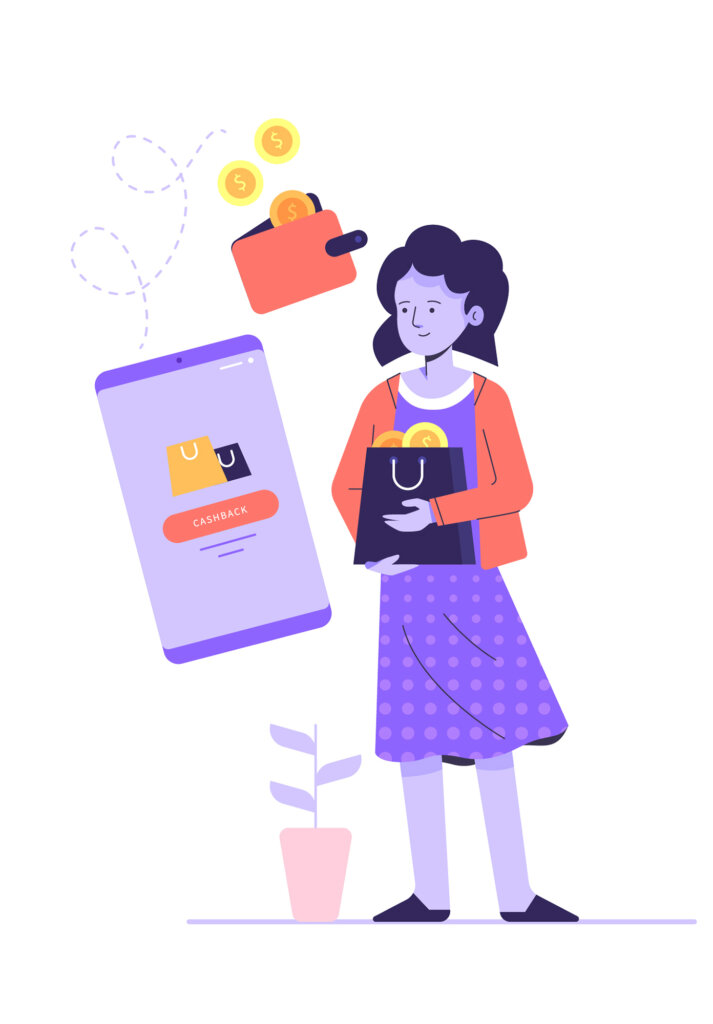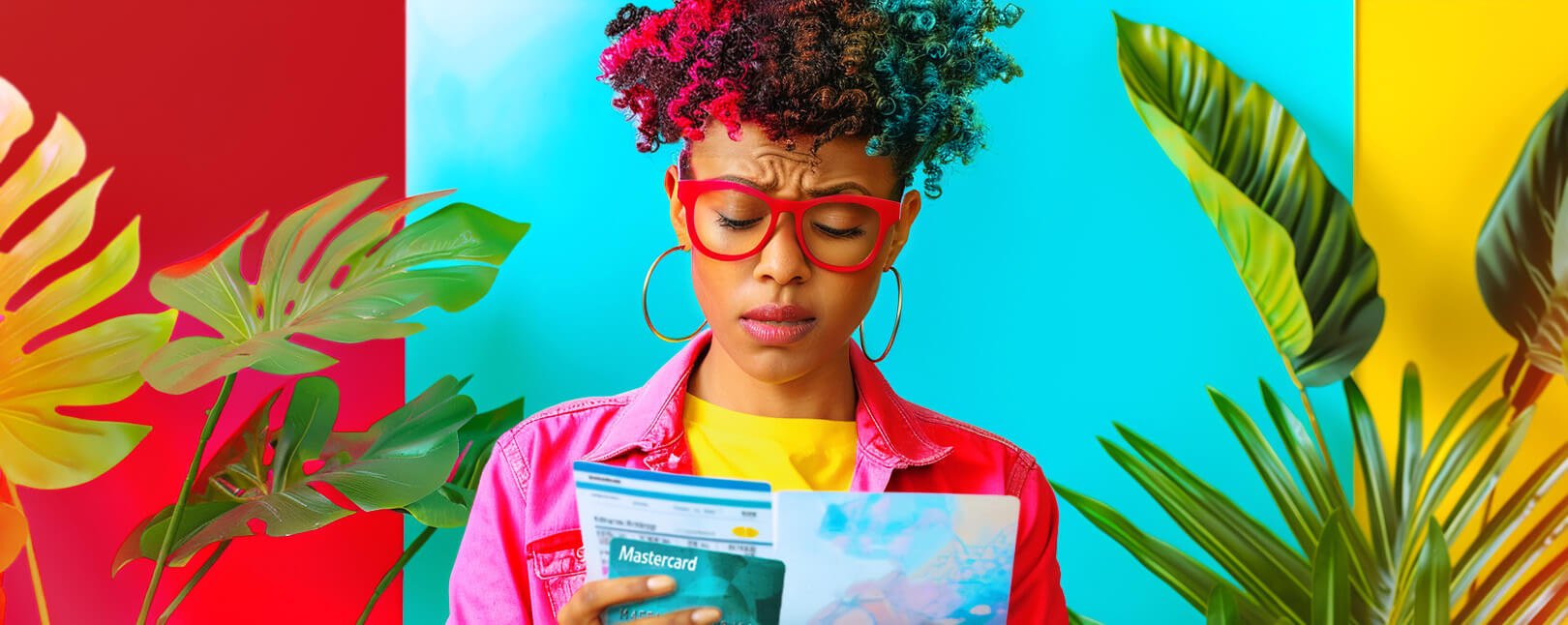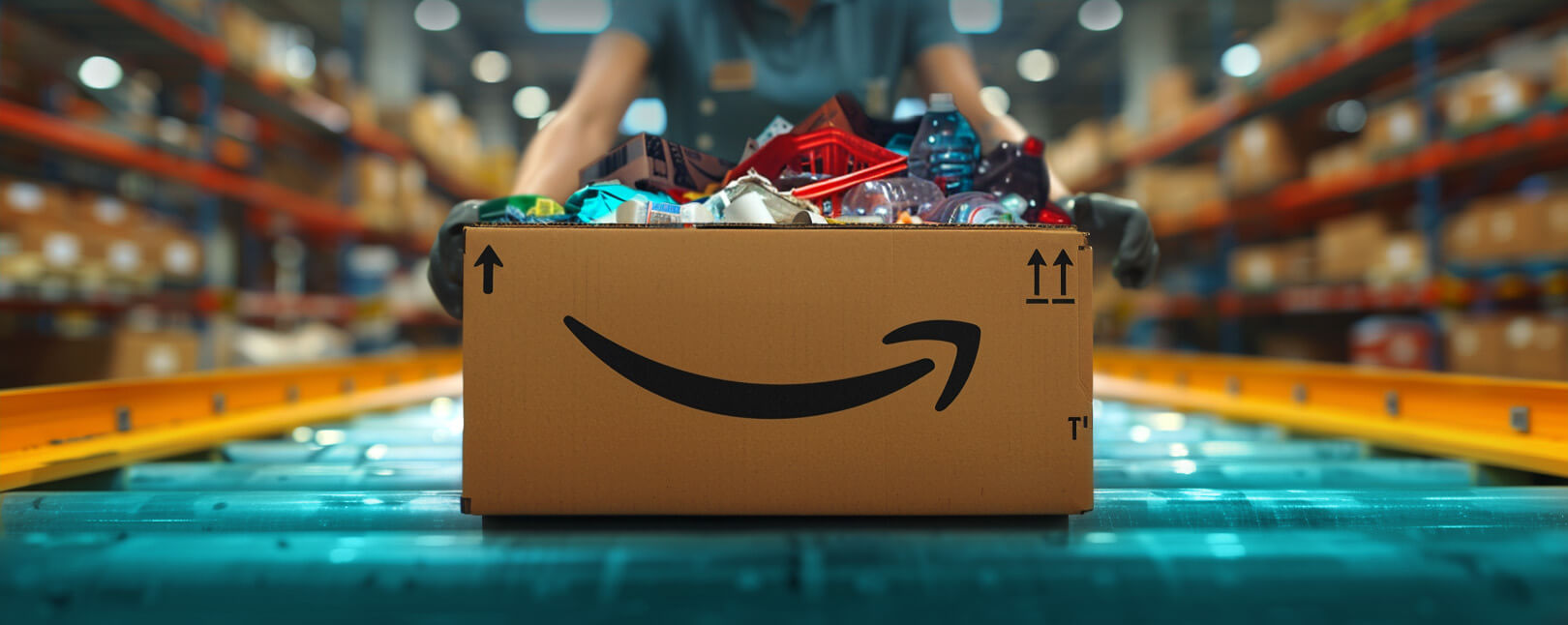Family Fraud: A “No-Win” Situation for Cardholders & Merchants
Let’s say you’re an app maker in the gaming industry. You sell digital goods that augment user experiences and make platforms more immersive.
However, you’ve just been notified of a wave of incoming disputes from customers. These individuals have been users for quite some time. However, they're all now claiming that people accessed their accounts to make unauthorized purchases.
Could it be fraud? Maybe. But what if there’s another possibility? What if the buyer on the other end of the transaction isn’t a criminal…but isn’t necessarily an authorized user, either?
That’s the issue now facing thousands of digital goods merchants and some of the world’s largest names in technology and retail. It’s a practice called “family fraud,” and both cardholders and merchants should take notice.
Recommended reading
- What is Chargeback Fraud? How do You Protect Yourself?
- Stop Buyer’s Remorse: Tips to Beat the Second-Glance Blues
- Return Fraud: What It Is, and How Merchants Can Fight It
- Accidental Friendly Fraud: a Fast-Growing Online Threat
- The Top 10 Tips for Chargeback Fraud Prevention in 2024
- Amazon Return Fraud Threatens Marketplace Sellers
What is Family Fraud?
- Family Fraud
Family fraud is a type of eCommerce fraud that occurs when an individual uses the personal information of a family member to make unauthorized purchases or carry out other unauthorized financial transactions.
[noun]/fa • mə • li • frôd/
Family fraud is a type of identity theft. Rather than being carried out by a professional scammer, though, the perpetrator is someone close to the cardholder.
It could be a parent, sibling, or extended family member, who takes advantage of their access to personal documents or information. They might use this access to open new credit accounts, apply for loans, or make purchases using a relative’s name. And, since they’re exploiting the trust and closeness typical of family ties, these actions can go unnoticed at first.
That said, family fraud isn’t always committed by someone who knows what they’re doing. It’s increasingly common for children to make purchases without a parent or guardian knowing they’ve done so, for example. While not intentional, this still qualifies as a form of family fraud.
Examples of Family Identity Theft
As we alluded to above, family fraud can manifest in two primary ways: intentional or unintentional. Each has distinct characteristics and consequences, affecting both the perpetrator and victim differently.
Intentional family fraud involves deliberate acts of deception. Here, a family member knowingly impersonates another to commit identity theft. This type of fraud is often premeditated and involves accessing and using a family member's personal information, such as their Social Security number, credit card details, or other sensitive data, without the victim’s permission. Common scenarios include:
The intent here is typically to gain financial advantages, like opening credit accounts, securing loans, or making large purchases in the victim’s name. This not only leads to financial loss but can also cause significant emotional distress and long-lasting damage to familial relationships.
There are emotional bonds involved. When victims notice the activity, there’s often a hesitation to confront the family member or take legal steps. This delay not only deepens the financial damage but also makes it tougher to resolve.
Examples of Unintentional Family Fraud
On the other hand, unintentional family fraud occurs when the actions are not premeditated or intended to cause harm. A family member (usually a child) might access a parent’s information and make purchases without realizing that they’re engaged in fraud.
And, although there is no intent to deceive, the financial repercussions can still be substantial. Examples of this include:
Unauthorized Credit Card Use
A child finds a parent’s credit card lying on the kitchen counter, and uses it to make unauthorized purchases. The child has limited understanding of how credit works, and so, doesn’t understand the gravity of what they’re doing.
Enrolling in Services
An individual signs up for a trial of a service, or enrolls in a service using a family member’s account or personal information. The account holder is then held liable for the cost of the service.
In-App Purchases
It’s common for parents to let their children play with their phones. However, if not carefully supervised, kids can end up making in-app purchases without the parent’s knowledge or permission.
Both forms of family fraud highlight the need for clear communication and strict safeguards around personal and financial information within family units. They also underscore the importance of educating all family members about the implications of using someone else's identity or financial resources, intentional or not.
Parents might only discover these transactions when receiving their monthly statements, leading to disputes with vendors and complications with their credit scores. When that happens, they may file chargebacks, claiming the purchases were unauthorized. This would be considered a form of first-party fraud, but it’s hard for merchants to prove that’s the case.
Who’s Responsible for Family Fraud?
The distinction between intentional and unintentional family fraud presents unique challenges in determining responsibility.
Intentional family fraud is pretty straightforward. When discovered, it’s often treated as a civil dispute between family members. Given the scale of the fraud, it may also result in criminal charges.
Unintentional family fraud can complicate matters. Here, the primary responsibility for monitoring and controlling account access lies with the cardholder. So, it could be argued that the cardholder failed to secure their account adequately, and the burden of responsibility rests with them.
However, there’s also a case to be made that merchants should bear some responsibility. After all, the merchant’s insufficient verification standards may have enabled these purchases. The merchant could’ve set stricter access controls. SO, in many cases, both parties may share some blame.
Regardless of where one stands in this debate, the reality is that merchants frequently bear the financial burden of these transactions. The cumulative financial impact of chargebacks on businesses can be substantial, highlighting the need for clearer policies and better preventive measures on both ends.
How Big of a Problem is Family Fraud?
In a word, huge.
Kids’ unauthorized purchases cost businesses in the eCommerce space billions every year. There are some high-profile examples; in 2017, for instance, Amazon agreed to refund consumers for roughly $70 million of unauthorized in-app purchases. However, the culprits weren’t criminals; the transactions were all made by children.
Kids with access to their parents’ devices or accounts make tens of millions of unauthorized in-app purchases every year. While most microtransactions are very small, some of these totals easily exceed $100 cumulatively before the parent is aware of the situation.
On average, these first-party fraud offenders initiate nine transactions before getting cut off. By that point, the damage is already done.

This problem surged after Amazon agreed to drop their appeal of an earlier FTC complaint alleging that parents were not liable for their children’s unauthorized purchases. The FTC previously settled with Apple and Google on the same subject in 2014, demonstrating that this is not an issue exclusive to one company.
The basis of these claims is that the companies’ platforms bear responsibility for the sales. The purchase was not fully informed because family members made the transaction without needing the cardholder’s authorization.
Consider the timeline of the Amazon App Store’s authentication protocols. According to the FTC’s claims, Amazon was liable for these transactions because they didn’t apply strong enough verification standards. Their trouble is just one high-profile example of a very common problem.
How to Prevent Family Fraud: Tips for Cardholders
Family fraud, whether intentional or unintentional, can have lasting effects on both financial health — and personal relationships — within a family.
Cardholders can take several proactive steps to prevent the misuse of their financial information to protect themselves and their loved ones. Here are some essential tips to help cardholders safeguard against family fraud:
#1 | Educate Your Family
Hold frank discussions about the importance of financial security and the consequences of fraud. Educate family members, especially children, on why they should never use someone else's information without permission. This can help foster a culture of transparency and responsibility within the family.
#2 | Secure Personal Documents
Store sensitive documents such as credit cards, bank statements, and identification cards in a secure place that is not easily accessible, even to family members. Consider using a locked drawer or safe to limit opportunities for unauthorized use.
#3 | Set Clear Boundaries and Rules
Establish clear guidelines about who can use your financial information and under what circumstances. If other family members need to use a credit card or account, set specific rules for its usage and monitor the transactions regularly.
#4 | Use Alerts & Notifications
Most financial institutions offer alert services that notify you of suspicious transactions or changes to your account. Sign up for these alerts to keep track of what is happening with your accounts in real-time.
#5 | Maintain Strong Passwords & Security
Use strong, unique passwords for all financial accounts, and don’t share them with anyone, including family members. Consider using password managers to keep track of different passwords securely. Two-factor authentication should also be enabled where available.
#6 | Regularly Review Your Credit Report
You are entitled to a free report from each of the three major credit reporting agencies once per year. Checking your credit report can help you identify any unauthorized activities or errors early on. Unfamiliar accounts in your name, for example, are a sign of identity theft.
#7 | Teach Responsible Financial Practices
Teach children about responsible financial practices from an early age. Explain the importance of not making unauthorized purchases and the implications of doing so. If children understand the value of money and the basics of credit, they are less likely to misuse it.
#8 | Limit Shared Access
Avoid sharing bank accounts and credit cards with family members unless absolutely necessary. If shared access is required, maintain strict controls and transparency about how these accounts are used, and the circumstances under which family members can use that access.
#9 | Conduct Family Financial Meetings
Regular family meetings to review financial statements and discuss budgeting can enhance understanding and accountability. These meetings keep everyone informed about the financial standing of the household and discourage secretive or underhanded behavior.
#10 | Legal & Financial Advice
In some cases, it may be wise to seek legal or financial advice, especially if large assets or complicated financial arrangements are involved. Professional guidance can provide strategies to protect assets and reduce the risk of fraud within a family.
How to Prevent Family Fraud: Tips for Merchants
If you’re a merchant, you may end up being held responsible for unauthorized purchases made by cardholders’ family members. Even if the sale seems entirely legitimate on your end, you can be left holding the bill for the lost profits and chargeback fees due to these unauthorized transactions.
Here are five steps that can help you prevent family fraud:
#1 | Make Customer Service Readily Available
Providing consistent, round-the-clock customer service is always the first step toward preventing chargebacks.
Customer service should be accessible as many hours a day as possible via phone, email, and social media. If live 24/7 service is not possible in-house, merchants should provide some form of contingency service. The best solution could be to contract with a third-party answering service to handle overflow and off-hours calls.
#2 | Validate Customer Receipts
Major app stores like Apple and Amazon allow merchants to offer receipt validation with in-app purchases. This lets sellers using these platforms validate purchases made by users from the merchant’s server. This ensures customers receive the items they buy and that the user ID is valid while providing a clear transaction record.
#3 | Address Complaints & Offer Refunds When Suitable
With the Amazon App Store settlement, many parents claimed the company suggested refunds weren’t possible. However, we know that when dissatisfied customers are unable to secure refunds, they often take matters into their own hands and go directly to the bank for a chargeback.
Showing genuine concern for a customer’s situation can go very far toward ensuring positive interactions between merchants and customers. If customers request refunds after a family member makes an unauthorized purchase, it may be best to satisfy their demand. Although offering a refund isn’t ideal, it is still preferable to a family fraud chargeback.
#4 | Encourage Parental Controls
Many users are unaware that iOS, Android, and Kindle devices all offer restrictions on in-app purchases using the devices’ content control settings.
It’s a good idea to remind customers of this fact whenever possible. Add information to your site instructing customers how to disable or restrict in-app purchases. Some designers also incorporate prompts into their apps to remind users to set parental controls.
#5 | Enable Two-Step Authentication
You can enable two-party authentication to approve in-app purchases. While we realize customers generally don’t love a big hassle when they’re ready to make a purchase, parents who would otherwise dispute the unauthorized transaction would likely appreciate the added protection.
Two-factor authentication does add a slight bit of friction to the checkout process. However, it may also save you a ton in chargeback fees, thereby counterbalancing that friction.
The above-mentioned practices can help prevent some chargebacks. However, the amount of information, insight, and expertise available to merchants is still too limited to contend with most cases. Only professional assistance can provide a comprehensive solution.
Remember: nothing you do will ever fully prevent chargebacks. No matter how well-prepared a business is or how great its budget might be, chargebacks will continue to roll in and cost merchants time and money.
Chargebacks911® offers a full suite of technologies and services to address multiple chargeback sources. Plus, all Chargebacks911 services are totally risk-free and backed by a 100% guaranteed ROI.
Don't lose another dollar to family fraud chargebacks. Contact Chargebacks911 today to learn more.

FAQs
What to do if you suspect family fraud?
If you suspect family fraud, immediately secure your financial documents and change your account passwords, then contact your financial institutions to alert them of potential fraud. It's also advisable to file a report with the police and consult legal advice to understand your rights and next steps.
What are the consequences of financial fraud?
Financial fraud can lead to significant monetary loss, plus damage to your credit score and long-term difficulties in securing loans or other financial services. It can also result in emotional distress and a breakdown of trust among affected parties.
What is family identity theft?
Family identity theft occurs when a family member steals another relative's personal information, such as Social Security numbers or credit card details, to commit fraud or theft. This betrayal not only leads to financial damage but also can severely strain or destroy familial relationships.
What do banks do about family fraud?
Banks typically investigate instances of family fraud by reviewing transaction histories and verifying account activity, and they may require formal documentation of the fraud, such as a police report. Depending on the situation, they may also reverse fraudulent charges and help secure compromised accounts to prevent further unauthorized access.













